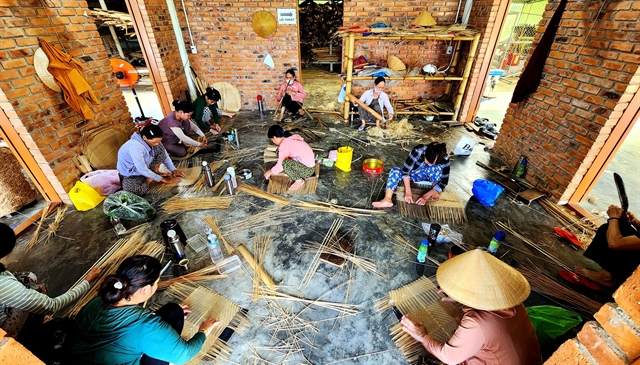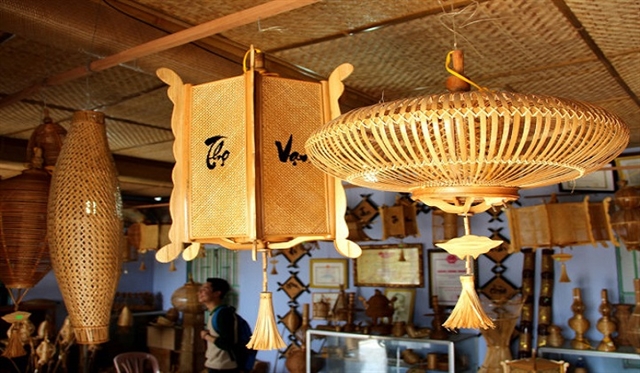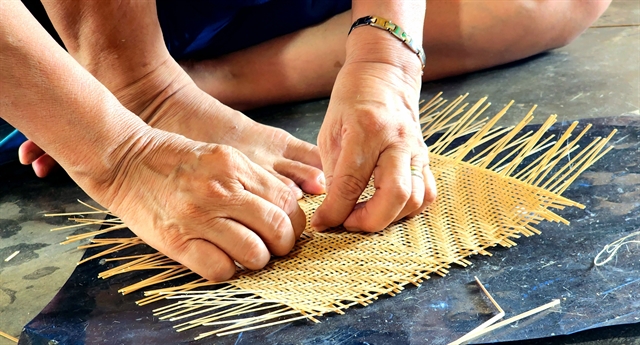Weather:
- Ha Noi 23oC
- Da Nang 21oC
- Ho Chi Minh 32oC

Facing the risk of losing its ancient craft of bamboo weaving, Bao La Village in the central province of Thừa Thiên Huê is striving hard to protect and preserve the tradition.
The village, located on the northern bank of the Bồ River in Quảng Điền District, is renowned for its bamboo weaving products. It is now taking advantage of support from authorities to recover the craft, with the aim of maintaining its cultural value and steadily improving income for local artisans.
The provincial authorities have taken many measures to restore the craft in Bao La by establishing production cooperatives associated with tourism, of which the Bao La Bamboo and Rattan Cooperative born in 2007 has helped successfully preserve and develop the bamboo craft.
The Bao La cooperative has been the core of the revival of this craft, creating stable jobs for local rattan- and bamboo-working households and for part of the agricultural redundant labour between harvest seasons.
After 16 years of development, the cooperative has about 130 members who can skilfully undertake a lot of work in making a wide range of bamboo products, according to its director Võ Văn Dinh.
He said the cooperative could make more than 500 types of bamboo and rattan products, including those for agriculture, forestry and fishing industries, as well as for daily life for domestic and foreign markets.

The bamboo items made by the cooperative, which are widely consumed at home and abroad, include lanterns, bags, vases, tables and chairs. Many items have been selected by artists and businessmen to display at arts and crafts exhibitions, and for decoration in restaurants, hotels and cafés.
Dinh revealed that each year the cooperative designs and makes an average of between 30 and 50 new product lines.
The idea to maintain and develop the craft in Bao La by setting up cooperatives has also helped the village concentrate its resources and make production more professional, with increasingly higher quality products.
Bao La products have gradually reached out to markets outside Thừa Thiên Huế and have been expanded to the whole country, and even exported abroad.
Through cultural and art festivals and particularly the Huế traditional craft festivals, the village's products have been promoted, attracting many customers and trade partners. They have also strongly exported to China and some countries in Europe.

The annual revenue of the Bao La Bamboo and Rattan Cooperative has increased by 10-30 per cent per year. This year's revenue is estimated at about VNĐ6 billion (US$243,000).
The monthly income of its members has been stable at around VNĐ6 million ($240), thus many of them have been able to reduce poverty and improve their living conditions.
"Compared to farming, bamboo weaving gives a higher and more stable income. Whether it's sunny or rainy, we have work. We know the current trend of green consumption for green and environmentally friendly products can open up many opportunities for our village," Nguyễn Thị Nguyên, a co-op member, said.
"To make our items more attractive to customers, we have to learn to be more innovative and creative in designs. New and exclusive models are prioritised, and we will no longer make any models that have been produced elsewhere."
Craft history
Bamboo has a close connection with Vietnamese rural life and has become part of the county's cultural tradition. Bao La Village is not an exception.
No one knows exactly when the bamboo weaving craft appeared. However, Bao La has long been known as the home of such bamboo products. Bao La bamboo products are not only beautiful but also durable.

The elderly said in the 18th and 19th centuries, the bamboo weaving occupation in Bao La developed strongly. An expanded consumption market brought good incomes to local crafters. The popularity of Bao La products soon spread throughout the country.
In the 80s and early 90s of the last century, rattan and bamboo items faced fierce competition with aluminium and plastic goods. A whole cottage industry was under threat.
Production activities were so moderate that the craft was at risk of disappearing until 2007 when the Bao La Bamboo and Rattan Cooperative was founded.
Although bamboo weaving is no longer the main source of income of the village, it has attracted people of all ages. Strong men find and transport the materials. The elderly process the raw materials, while children and women do weaving.
Today, the villagers earn their livelihood from agriculture but still continue the traditional craft.
Along with its bamboo and rattan weaving craft, the village and the Bao La Bamboo and Rattan Cooperative have become destinations selected by travel agencies to develop tourism.
The provincial authorities have even recently issued a decision recognising Bao La and its bamboo and rattan weaving craft as a tourist product and destination, opening up a new prospect for development for this craft village. VNS


